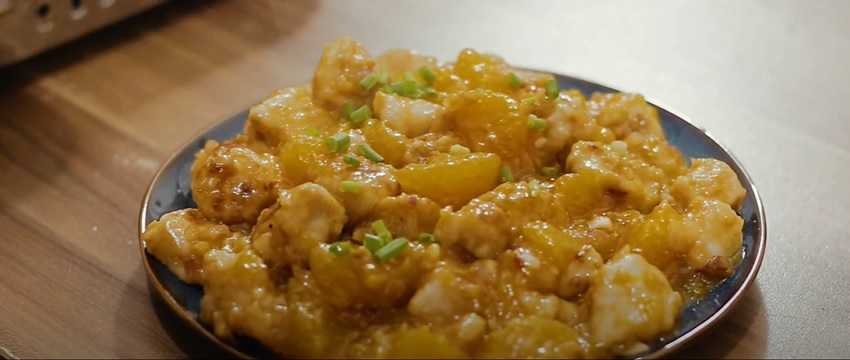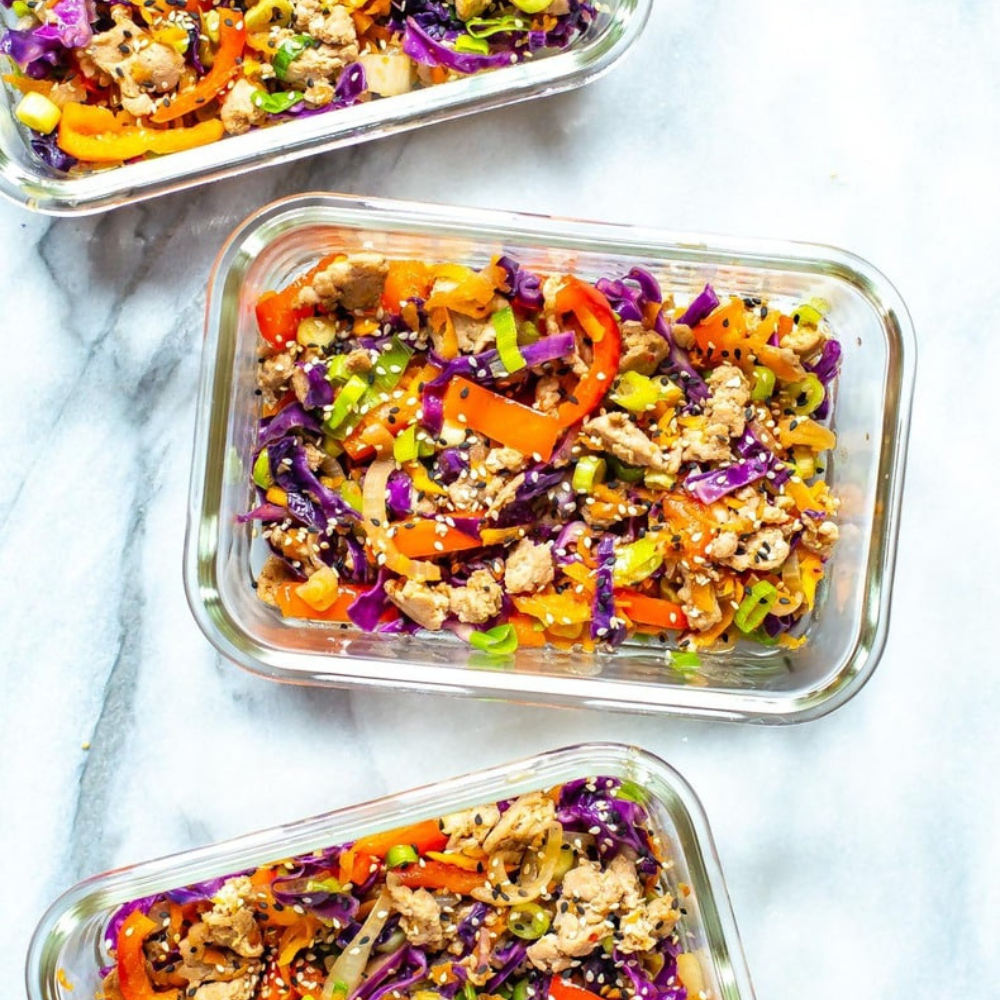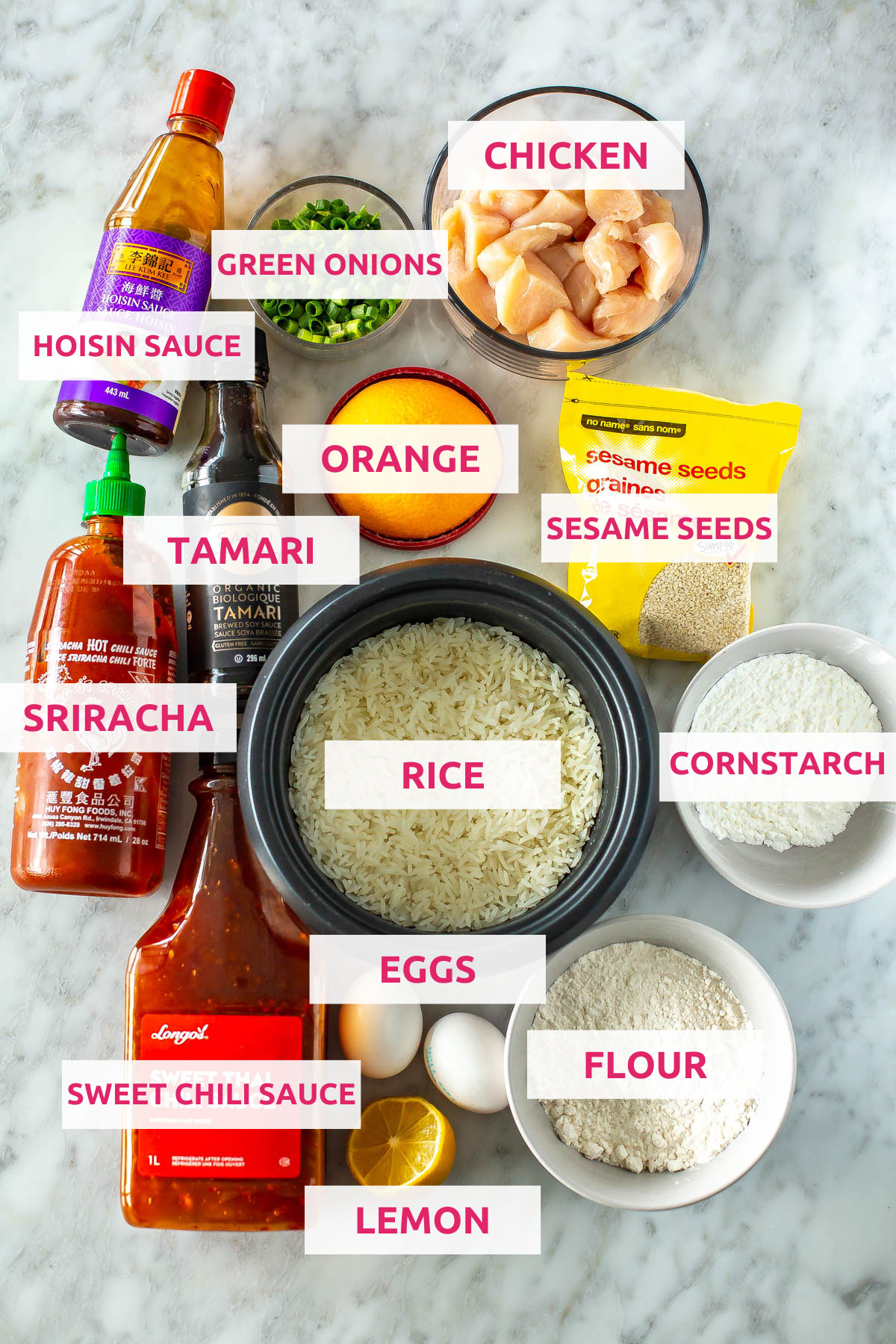Hey there, food lovers! Ever found yourself at a Chinese takeout joint, staring at the menu, and wondering, “What the heck is Mandarin Chicken?” Well, you’re in for a treat today ‘cause I’m gonna spill the beans on this yummylicious dish that’s got folks hooked. At its core, Mandarin Chicken is a Chinese-American creation, blending crispy or tender chicken with a sweet, tangy, sometimes spicy sauce that’s just pure magic on your taste buds It’s not straight-up authentic Chinese grub, but a Western twist that’s become a staple in many a restaurant.
I first stumbled on this dish years back at a little hole-in-the-wall spot and man I was blown away by that sticky, glossy sauce clinging to every bite of chicken. If you’re curious about what makes this dish tick, how it’s different from say, Orange Chicken, or even how to whip it up at home, stick with me. We’re diving deep into the world of Mandarin Chicken, and trust me, by the end you’ll be itching to try it yourself!
So, What Exactly Is Mandarin Chicken?
Let’s get down to brass tacks Mandarin Chicken is a popular dish in Chinese-American cuisine, often featuring bite-sized pieces of chicken—either roasted, pan-fried, or sometimes deep-fried—coated in a rich, sweet, and slightly tangy sauce. The sauce is the star of the show, usually made with ingredients like soy sauce, sugar or honey, and a citrusy kick from orange juice or zest. It’s got this glossy, thick texture that sticks to the chicken like a dream
Now, don’t get it twisted—this ain’t a dish you’d find in the heart of China. It’s more of a fusion food, born outta the need to adapt traditional Chinese flavors to Western palates. Think of it as a tasty love letter to Chinese cooking, but with a bit of American flair. The name “Mandarin” likely nods to the Mandarin language spoken in northern China, or just sounds fancy enough to catch your eye on a menu. Either way, it’s a marketing win, ‘cause who doesn’t wanna order something that sounds exotic?
The chicken itself can be prepped in different ways. Some spots roast or pan-sear it for a softer bite, while others go the crispy route with a light batter and a quick fry. No matter the method, the end game is the same: juicy chicken wrapped in a sauce that’s got that perfect balance of sweet and savory, with maybe a lil’ heat if you’re lucky.
How’s It Different from Orange Chicken?
I know what you’re thinking—ain’t Mandarin Chicken just Orange Chicken with a fancier name? Nope, not quite! These two dishes are like cousins; they got similarities, but they ain’t the same person. I’ve had my fair share of both, and lemme break it down for ya with a quick comparison.
| Aspect | Mandarin Chicken | Orange Chicken |
|---|---|---|
| Origin | Traditional-inspired, Chinese-American dish | Purely Americanized, created in the US |
| Chicken Prep | Often roasted or pan-fried, sometimes crispy | Usually deep-fried with a crispy batter |
| Sauce Texture | Thicker, stickier, more glaze-like | Thinner, often lighter and more fluid |
| Flavor Profile | Sweeter with a strong citrus punch | Milder orange flavor, sometimes saltier |
| Cooking Method | Mixed with sauce after roasting or light frying | Tossed in sauce after deep-frying |
See, Mandarin Chicken tends to lean heavier on the sweet side, with a sauce that’s got a deeper orange vibe—sometimes from actual juice or zest. Orange Chicken, on the other hand, is more of a fast-food staple, with that crispy, deep-fried texture we all know from takeout boxes. It’s got a tangy sweet-sour thing going on, but it don’t hit as hard on the citrus as Mandarin does. So, if you’re craving something with a bold fruity kick, Mandarin’s your jam. Want something crunchier and less intense? Go for Orange.
A Peek Into Its Roots (Or Lack Thereof!)
Alright, let’s chat about where this dish comes from—or at least, where we think it does. Truth be told, the history of Mandarin Chicken is kinda murky, like trying to remember what you ate last Tuesday. What we do know is that it’s part of the bigger story of Chinese-American food. Way back when, Chinese immigrants came to the States and started tweaking their recipes to match local tastes. Stuff like chop suey popped up, and eventually, dishes like Mandarin Chicken came along for the ride.
The name might suggest it’s tied to a specific region in China, but nah, it’s more of a made-up term to give it that “authentic” feel. I reckon it’s just a nod to Chinese culture in general, making it sound all sophisticated and whatnot. What matters is that it stuck, and now you can find this dish in tons of eateries across the country, each with their own lil’ spin on it.
What Goes Into Making Mandarin Chicken?
Now that we’ve got the “what” down, let’s talk about the “how.” If you’re picturing some crazy complicated recipe, chill out—it’s actually pretty doable. The magic of Mandarin Chicken lies in two main parts: the chicken and that drool-worthy sauce. Here’s the lowdown on what you’ll typically find in it, based on my own kitchen adventures.
- Chicken: Usually boneless, skinless breast or thigh meat, cut into small chunks. Thighs are juicier, but breast works if you’re watching the cals.
- Marinade: A mix of soy sauce, maybe some ginger or garlic, to give the chicken a flavor boost before cooking.
- Coating: For that crispy texture, it’s often dredged in cornstarch or a flour mix. Some folks double-coat with egg for extra crunch.
- Sauce Base: Soy sauce for umami, sugar or honey for sweetness, and vinegar or lemon juice for a tangy edge.
- Citrus Kick: Orange juice or zest is key to that Mandarin vibe. It’s what separates this from other sweet sauces.
- Aromatics: Garlic and ginger, always. They add depth so it ain’t just a sugar bomb.
- Thickener: A lil’ cornstarch slurry to make the sauce glossy and sticky.
- Extras: Some recipes toss in chili flakes for heat, or sesame oil for a nutty finish.
Cooking-wise, you’ve got options. Some roast or pan-sear the chicken for a lighter feel, while others fry it up for that crispy goodness. Then, you mix it with the sauce ‘til it’s all coated and shiny. Garnish with green onions or sesame seeds if you’re feeling fancy, and boom, you’ve got yourself a plate of heaven.
Let’s Cook Some Mandarin Chicken at Home!
Speaking of cooking, why not try making this bad boy yourself? I’ve messed around in the kitchen enough to come up with a recipe that’s easy-peasy and tastes just as good as takeout—maybe even better. Here’s how we do it at my place. Grab your apron, and let’s get cracking!
Ingredients (Serves 4)
- 1 lb boneless, skinless chicken breast or thighs, diced into bite-sized pieces
- 2 eggs, whisked
- 1/2 cup cornstarch
- 1 cup all-purpose flour (or gluten-free if ya need it)
- 1/4 cup veggie oil (sunflower or avocado works great)
- 4 green onions, sliced for garnish
- Sesame seeds, optional, for that pro look
For the Mandarin Sauce:
- Juice of 1 orange (fresh is best, but store-bought is fine)
- 1 tbsp cornstarch
- 2 tbsp hoisin sauce (adds a dope umami kick)
- 2 tbsp sweet chili sauce
- 1 tbsp soy sauce (tamari if gluten-free)
- 1 tbsp lemon juice
- 2 cloves garlic, minced
- 1 tsp sriracha or hot sauce (adjust if you’re a spice wimp)
For the Side:
- 1 cup jasmine rice
- 1 1/4 cup water
- 1 tsp butter
- Pinch of salt
Steps to Make It
- Cook the Rice: Toss the rice, water, butter, and salt into a rice cooker or pot. Let it do its thing ‘til the liquid’s gone. Set aside to keep warm.
- Prep the Chicken: Put the eggs in a bowl. In another bowl, mix the cornstarch and flour. Dip each chicken piece in egg, then roll it in the flour mix ‘til coated. This is gonna give it that nice crunch.
- Fry It Up: Heat your oil in a big skillet over medium-high heat. When it’s hot (test with a lil’ piece of chicken—it should sizzle), add the chicken in batches. Cook 3-4 minutes per side ‘til golden. Don’t crowd the pan, or it’ll get soggy!
- Drain the Grease: Pull the chicken out and let it sit on a paper towel-lined plate to soak up extra oil. Sprinkle with a pinch of salt.
- Make That Sauce: In a bowl, whisk the orange juice with cornstarch ‘til smooth. Add hoisin, sweet chili sauce, soy sauce, lemon juice, garlic, and sriracha. Mix well. Pop it in the microwave for 1 minute, covered, ‘til it thickens. Stir it halfway if needed.
- Toss It Together: Dump the cooked chicken into the sauce bowl and stir ‘til every piece is coated in that sticky goodness.
- Serve It Hot: Plate up the rice, top with the saucy chicken, and sprinkle green onions and sesame seeds on top. Dig in while it’s still warm!
This recipe’s a game-changer, folks. It ain’t deep-fried like some versions, so it’s a tad healthier, but still got that crispy vibe. Plus, the sauce? Outta this world. If you make it, lemme know how it turns out—I’m all ears!
Tips and Tricks for the Best Mandarin Chicken
I’ve made this dish a buncha times, and I’ve picked up some nifty hacks along the way. Here’s how to make sure your Mandarin Chicken is top-notch:
- Crisp It Up: If you want that extra crunch, double-dip the chicken—egg, flour, egg again, then flour. And keep that oil hot, around 350°F if you’ve got a thermometer.
- Sauce Control: Too thin? Add more cornstarch slurry (equal parts cornstarch and water) and heat it a bit. Too thick? Splash in some water or orange juice to loosen it.
- Healthier Twist: Skip the coating and just pan-sear the chicken. You won’t get the crunch, but it cuts calories like nobody’s business.
- Add Veggies: Toss in some stir-fried broccoli, bell peppers, or bok choy. It bulks up the meal and adds color. I love me some crunchy peppers with this!
- Gluten-Free Vibes: Swap regular soy sauce for tamari and use a gluten-free flour mix. Double-check your hoisin sauce too—some got gluten sneakily in there.
Oh and don’t skimp on the garnish. Those green onions and sesame seeds ain’t just for looks—they add a lil’ somethin’ extra to each bite.
What to Pair with Mandarin Chicken?
Wondering what to serve alongside this tasty dish? I gotchu covered. Mandarin Chicken plays nice with a buncha sides, so you can mix and match based on what you’re craving.
- Rice: Classic jasmine or brown rice soaks up that sauce like a champ. If you’re low-carbing it, try cauliflower rice.
- Noodles: Fried noodles or lo mein can turn this into a full-on feast.
- Apps: Spring rolls or egg rolls on the side? Yes, please! They’re perfect for munching while the main dish cools.
- Veggies: Steam or air-fry some greens like snap peas or carrots. Keeps the meal balanced and not just a carb fest.
- Dumplings: Steamed dumplings are a fave of mine to round out the Chinese takeout vibe at home.
Honestly, you can’t go wrong. This dish is versatile as heck, so experiment ‘til you find your perfect combo.
Variations to Spice Things Up
One thing I dig about Mandarin Chicken is how you can tweak it to your liking. Not every recipe’s gotta be the same old, same old. Here’s some ideas I’ve toyed with or seen around:
- Spice It Up: Crank the heat with more sriracha or red pepper flakes. I once overdid it and nearly cried, but dang, it was a good burn!
- Citrus Swap: If oranges ain’t your thing, try tangerine juice or even pineapple for a tropical twist. It’s a lil’ outta left field, but works.
- Protein Switch: Not feelin’ chicken? Use shrimp or tofu. Tofu soaks up the sauce like a sponge—just press it first to ditch the water.
- Sauce Play: Add a dollop of hoisin for extra umami or a splash of sesame oil for that nutty aroma. Makes it smell like a pro kitchen in there.
- Veggie Load: Mix in carrots, broccoli, or whatever’s in your fridge. I’ve thrown in leftover zucchini before, and it was surprisingly dope.
The beauty of this dish is its flexibility. Play around, mess up a few times—it’s all part of the fun of cooking.
Why We’re Obsessed with Mandarin Chicken
Let’s wrap this up with why this dish keeps us coming back for more. For me, it’s all about that killer combo of crispy or tender chicken with a sauce that hits sweet, tangy, and savory all at once. It’s comfort food with a twist, something familiar yet different enough to feel special. Plus, it’s easy to make at home, which means I don’t gotta shell out bucks every time I crave it.
Whether you’re a takeout junkie or a home cook looking for a new recipe to master, Mandarin Chicken’s got something for ya. It’s a crowd-pleaser, a conversation starter, and just plain delicious. I’ve served it at family dinners, and even the picky eaters couldn’t resist going for seconds.
So, next time you’re pondering what to cook or order, give Mandarin Chicken a shot. Whip it up using my recipe, tweak it to your heart’s content, or hunt down a local spot that does it right. Trust me, once you taste that sticky, citrusy glaze, there ain’t no turning back. What’s your take—gonna try making it or got a fave spot to grab some? Hit me with your thoughts, ‘cause I’m always down to talk food!

Meal Prep on a Budget
Get my FREE Budget-Friendly Meal Plan with easy-to-follow prep instructions to make your dinners affordable and stress-free!

- Boneless skinless chicken breast – boneless skinless chicken thighs will also work, but will increase the calorie count.
- Eggs – you’ll need the egg to coat the chicken. Alternatively, you can try using mayo or buttermilk, but it may alter the flavour.
- Cornstarch – arrowroot or potato starch will also work. Alternatively, you can just replace it with more flour.
- Flour – use your favourite gluten-free flour instead.
- Sunflower oil – swap out for another neutral cooking oil such as avocado or vegetable oil.
- Green onions – leave this garnish off altogether if you don’t have any on hand.
- Sesame seeds – white or black sesame seeds would both be good. If you don’t have any on hand, feel free to leave them off altogether.
- Juiced orange – you can use store-bought orange juice, but it will increase the calorie count.
- Cornstarch – arrowroot or potato starch are good swaps for cornstarch.
- Hoisin sauce – oyster sauce is the best substitute here.
- Sweet chili sauce – make your own using 1 tbsp. hot sauce, 4 tbsp. honey and 1 tbsp. soy sauce.
- Soy sauce – tamari or coconut aminos are the best substitutes for soy sauce.
- Lemon juice – freshly squeezed or bottled lemon juice will both work.
- Garlic – freshly minced garlic is best but the jarred minced variety will work in a pinch.
- Sriracha – or another hot sauce of your choice.
- Jasmine rice – you could also serve this dish with brown rice or any rice variety you like.
- Butter – olive oil or margarine will help keep the rice nice and moist.

Step 4: Drain the oil.
Drain the chicken on a paper-towel lined plate.

Mandarin Chicken Recipe
FAQ
What is mandarin chicken made of?
Mandarin Chicken – This healthy Chinese recipe inspired by take out from Panda Express. Chicken breast chunks coated in a sweet/salty brown glaze made of orange juice, brown sugar, and soy sauce.
What’s the difference between orange chicken and mandarin chicken?
In summary, orange chicken is characterized by its sweet and tangy orange sauce and is usually deep-fried, while mandarin chicken tends to have a more savory flavor profile, with less emphasis on sweetness and often includes more vegetables.
What does mandarin sauce taste like?
Made with the perfect blend of mandarin orange juice concentrate, soy sauce and spices, this sauce has a tangy flavor that’s sure to please, and medium heat adds a little kick that promises to perk up the senses.
Is mandarin chicken spicy?
The secret to Trader Joe’s Mandarin Orange Chicken’s success is in its simplicity, really. Tender chunks of juicy chicken in a crispy breading with a sweet and spicy orange sauce…
